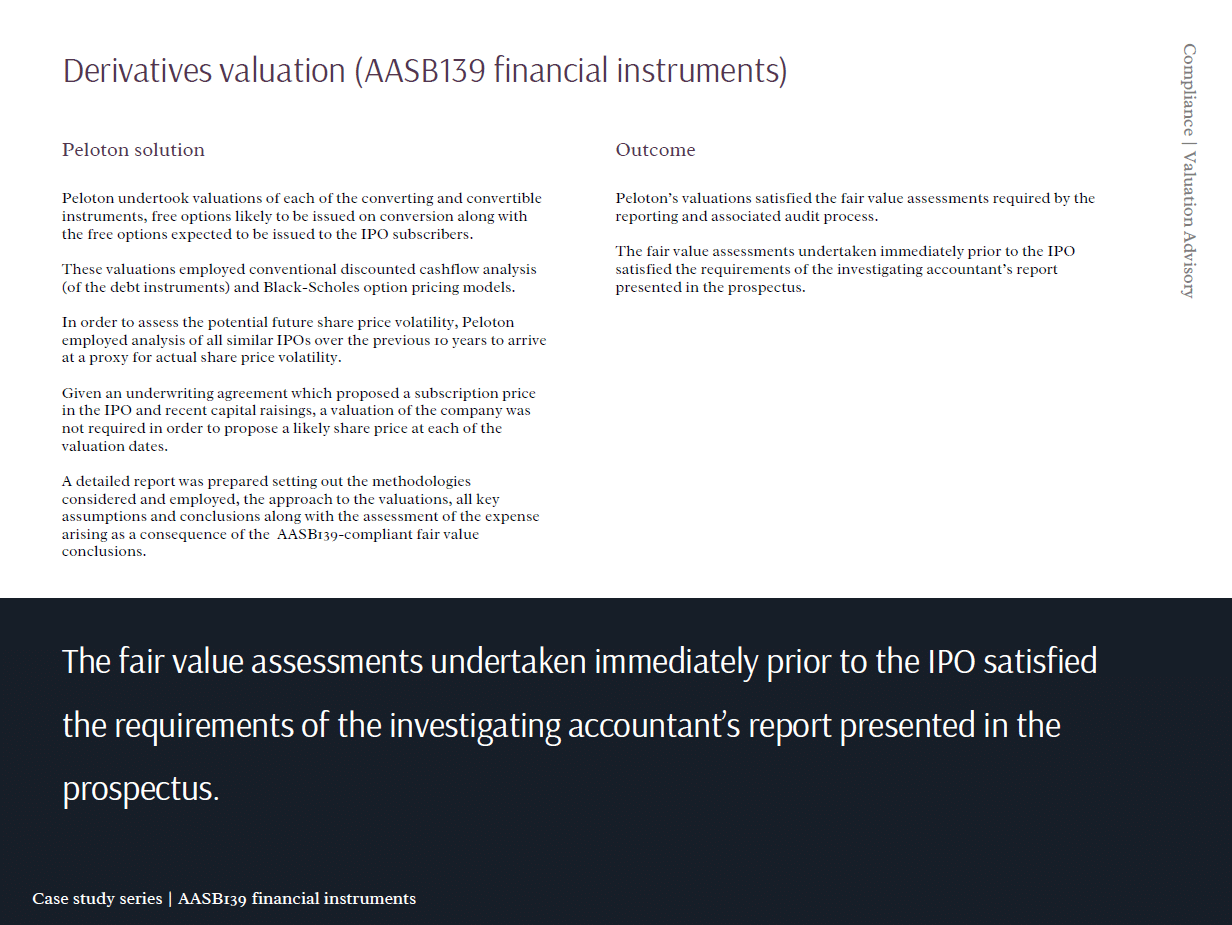The need for a derivatives valuation
An exploration and mining company had funded a significant portion of its pre-IPO development costs via multiple series of converting or convertible instruments (mezzanine debt/equity) over several years.
As an unlisted public company, AASB139 required annual assessments of the fair value of the instruments.
Each series of instruments were governed by separate deeds and each entitled the holder, upon conversion, to a different series of free options over further shares exercisable at different prices and expiry terms.
Over several years Peloton had undertaken AASB139 fair value assessment of the instrument in order for the company’s finance team to bring to account an expense relating to the likely conversion of the instruments from debt to equity and the grant of free attaching options.
Ahead of a proposed IPO, the company also required a one-off assessment of fair value of all the instruments, the options that were expected to be granted on IPO-triggered conversion and further free options issued to IPO subscribers.
Valuation issues and considerations
As each of the converting and convertible instruments and the free options relating to each tranche of capital had different terms (interest, conversion price, number of free attaching options, term and exercise price of options), a valuation of each instrument was required.
The valuations were required to satisfy the ‘fair value’ requirements of AASB139 and be reviewed by the company’s auditor and investigating accountant.
As the valuations had an element of prospectivity, it would be necessary to consider the likelihood of the conversion trigger (IPO on the ASX and/or OTC Market).
As an unlisted company, it would be necessary to consider the likely share price volatility if the conventional Black-Scholes Option Pricing Model was to be employed.
An assessment of a proxy share price would also be required to assess both the value of the various series of convertibles and the multiple series of options.
As the valuations had an element of prospectivity, it would be necessary to consider the likelihood of the conversion trigger (IPO on the ASX and/or OTC Market).
Peloton solution
Peloton undertook valuations of each of the converting and convertible instruments, free options likely to be issued on conversion along with the free options expected to be issued to the IPO subscribers.
These valuations employed conventional discounted cashflow analysis (of the debt instruments) and Black-Scholes option pricing models.
In order to assess the potential future share price volatility, Peloton employed analysis of all similar IPOs over the previous 10 years to arrive at a proxy for actual share price volatility.
Given an underwriting agreement which proposed a subscription price in the IPO and recent capital raisings, a valuation of the company was not required in order to propose a likely share price at each of the valuation dates.
A detailed report was prepared setting out the methodologies considered and employed, the approach to the valuations, all key assumptions and conclusions along with the assessment of the expense arising as a consequence of the AASB139-compliant fair value conclusions.
Outcome
Peloton’s valuations satisfied the fair value assessments required by the reporting and associated audit process.
The fair value assessments undertaken immediately prior to the IPO satisfied the requirements of the investigating accountant’s report presented in the prospectus.
The fair value assessments undertaken immediately prior to the IPO satisfied the requirements of the investigating accountant’s report presented in the prospectus.
